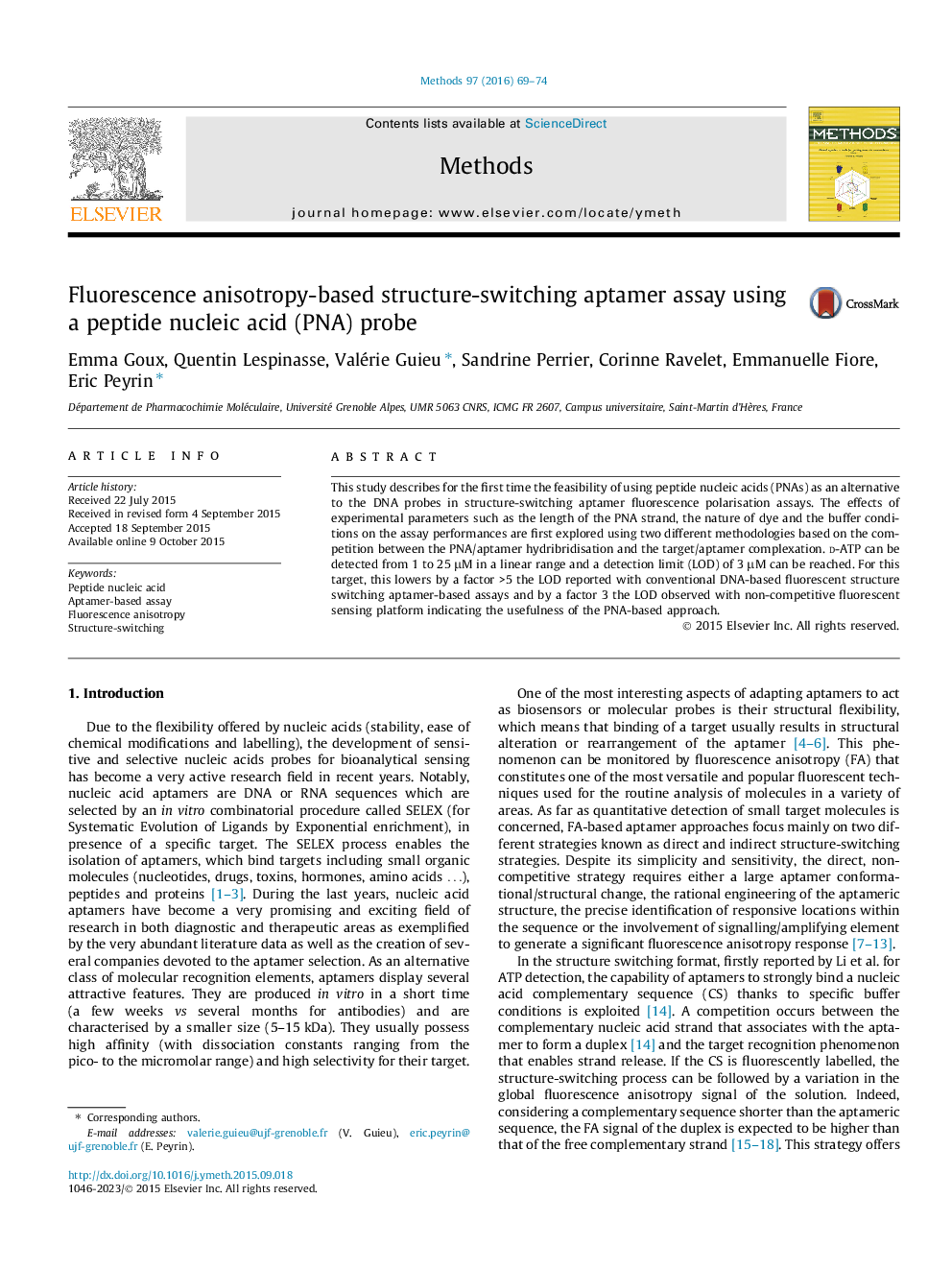| Article ID | Journal | Published Year | Pages | File Type |
|---|---|---|---|---|
| 1993195 | Methods | 2016 | 6 Pages |
•A novel structure-switching aptamer strategy is proposed.•Peptide nucleic acid (PNA) is used as an alternative probe in the fluorescence anisotropy assay.•A limit of detection of 3 μM is reached for the ATP target.
This study describes for the first time the feasibility of using peptide nucleic acids (PNAs) as an alternative to the DNA probes in structure-switching aptamer fluorescence polarisation assays. The effects of experimental parameters such as the length of the PNA strand, the nature of dye and the buffer conditions on the assay performances are first explored using two different methodologies based on the competition between the PNA/aptamer hydribridisation and the target/aptamer complexation. d-ATP can be detected from 1 to 25 μM in a linear range and a detection limit (LOD) of 3 μM can be reached. For this target, this lowers by a factor >5 the LOD reported with conventional DNA-based fluorescent structure switching aptamer-based assays and by a factor 3 the LOD observed with non-competitive fluorescent sensing platform indicating the usefulness of the PNA-based approach.
